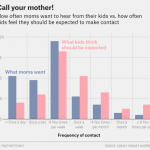Halloween’s coming up, so let’s start with something spooky. The video below is of a Japanese robot that was designed to emulate human facial expressions and is startlingly good at it.
(h/t Gizmodo)
For me, the fright comes from the fact that I’m pretty sure I would have a difficult time telling the robot in the video apart from an organic human in many contexts. The movements in the video were a little herky-jerky, but it was also clear that the researchers were just running the robot through its range of expressions. With smoother transitions, I would probably be fooled (though, of course, that’s a long way from being able to program it to respond appropriately and quickly in conversation).
The chart below (from Wikipedia) illustrates the idea that near-human objects are much more viscerally disturbing than clearly non-human figures.
For me, the robot manages to make it out of the Uncanny Valley, which is it’s own kind of scary/exhilarating.
Speaking of our future robot overlords, I ended up drawn into a fight about transhumanism in a public health class today when several students, who currently desire to go on living, insisted that there was something unseemly if an elderly person shared their desire not to die. (We were discussing research that aimed to rejuvenate the aging immune system, which could extend the lifespans of the 70+ demographic). The students on the other side rejected these proposed treatments as dangerous and unnatural.
I was furious, both because this is as good an argument against antibiotics as it is against gene therapy, and I suspect that my classmates accepted only the former and not the latter solely because they were accustomed to the power of antibiotics. As someone with strong transhumanist leanings, I’m always deeply suspicious of attempts to privilege the status quo as natural and well ordered.
If you’d like to hear a basic argument in favor of transhumanism (expressed through the lens of Harry Potter fanfiction) you won’t do better than this chapter of Harry Potter and the Methods of Rationality. Here’s an excerpt that parallels my response in class:
“If people were hit on the heads with truncheons once a month, and no one could do anything about it, pretty soon there’d be all sorts of philosophers, pretending to be wise as you put it, who found all sorts of amazing benefits to being hit on the head with a truncheon once a month. Like, it makes you tougher, or it makes you happier on the days when you’re not getting hit with a truncheon. But if you went up to someone who wasn’t getting hit, and you asked them if they wanted to start, in exchange for those amazing benefits, they’d say no. And if you didn’t have to die, if you came from somewhere that no one had ever even heard of death, and I suggested to you that it would be an amazing wonderful great idea for people to get wrinkled and old and eventually cease to exist, why, you’d have me hauled right off to a lunatic asylum! So why would anyone possibly think any thought so silly as that death is a good thing? Because you’re afraid of it, because you don’t really want to die, and that thought hurts so much inside you that you have to rationalize it away, do something to numb the pain, so you won’t have to think about it”
The whole story is ongoing and really excellent. You can start reading it here.
Before I get caught up any further in a transhumanist rant, I’ll break off to mention what I’ve been up to this week. The production of Iolanthe which I am co-directing had a very successful opening night, and I couldn’t be more pleased with the fabulous cast and crew. There’s a very nice review (with pictures) up at Midnight at Yale, if you’re interested.
The particular highlight for me was getting to choreograph a dance for the four members of the House of Lords pictured above. I got to draw on my experience with 19th century quadrilles to choreograph a very pompous number that incorporated many obsequious bows. So much fun!
This week, I saw two really interesting analyses of popular fantasy series. I’ve pulled a quote from each, but they’re both worth checking out in full.
Experimental Theology’s “Tales of Disenchantment: On Harry Potter and Vampire Movies”
But increasingly, the modern genre (MG) of vampire movies is moving away from these metaphysical and spiritual themes. The MG, in contrast to the CG, is non-metaphysical. The MG is biological. Increasingly, you see biological explanations for vampirism and its symptoms. The vampire bite is analogous to a mosquito or rabid dog bite causing a gene-altering allergic reaction or viral infection. Further, the vampire’s reactions to garlic, sunlight, and silver are increasingly portrayed as hyper-severe allergic reactions.
In a correlated manner, we thus see the decline of the metaphysical weapons against vampires. If you assault a vampire in the MG, holding a crucifix aloft, the vampire will chide you for being superstitious. The supernatural is absent in the modern vampire genre.
Stephen Boyer’s “Narnia Invaded” (h/t First Thoughts)
[T]he screenwriters who put this scene together were actively encouraged to think about what it would be like to go from “king” to “schoolboy”—not a pleasant prospect, of course, and one to which any of us might react with bitterness and resentment, just as Peter does.
Right, any of us might react that way—but that is because we have not breathed the air of Narnia. We are thinking like ordinary persons (and worse, like self-sufficient, twenty-first-century, Western intellectuals) instead of like knights or kings. In Lewis’s telling of all of the Narnia tales, the children’s experiences as kings and queens in Narnia consistently transform them into nobler, more virtuous people in their own world. They are not spoiled children wanting to be kings again; they are noble kings who carry that very nobility back into their non-royal roles as schoolchildren.
But not so in Hollywood. To be a king at all is to hunger for power forevermore, like a tiger that has tasted human blood and ever afterwards is a “man-eater.”
I had an article in the Yale Daily News this week on the twisted understanding of American democracy driving Obama’s opposition to allowing the courts to abolish Don’t Ask Don’t Tell. Here’s a pull quote from the article titled “The Wrong Side of History”
Although both judicial and executive approaches to ending DADT are legal and constitutional options, Obama insists that there is something unseemly about a remedy that doesn’t come from the people’s duly elected representatives.
Obama is parroting the main talking point of the anti-gay rights movement: judges are stepping out of line and improperly imposing their will on Americans by ruling in favor of gay rights ahead of any shift in public opinion. This is the rallying cry (and often the only argument) of the pro-Proposition 8 advocates. Opponents of the DADT injunction and of court decisions expanding gay rights generally can correctly object to these tactics as undemocratic. But it’s absurd to call them anti-American.
Halloween this weekend! Absolutely my favorite holiday, since I take any opportunity to dress up in costume. The only trouble is: my costume needs an underbust corset and a bustle skirt, and, although I have patterns, I haven’t sewn a stitch of either. Wish me luck!
[Seven Quick Things is a blog carnival run by Jen of Conversion Diary]













